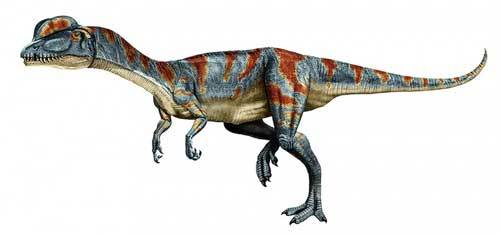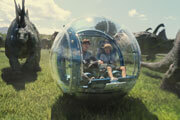Dilophosaurus has been nicknamed the terror of the early Jurassic. You might think the name is perfect for it after watching Jurassic Park. This is the dinosaur that had a large colorful neck frill and spit poison in the movie. If the movie was correct the dinosaur really would have been a holy terror. However, don't always believe what Hollywood tells you.
In real life, Dilophosaurus was actually bigger than it was in Jurassic Park. What might be disappointing is that there is no evidence it had neck frills (it had a normal neck) or poison glands. It didn't have the hollow fangs to spit venom out of, like snakes do. On top of all this, Dilophosaurus was the biggest predator in its environment so it wouldn't have needed to be poisonous.
 Dilophosaurus: The Terror of Early Jurassic
Dilophosaurus: The Terror of Early Jurassic
Dilophosaurus was a slender meat-eater that walked on two legs. It grew to about 20 feet (six meters) tall and five feet (1.5 meters) tall at the hips. Dilophosaurus had two thin crests that looked like half dinner plates sticking out of its head. It might have been used for mating or just for a fashion statement. Dilophosaurus had short arms with three fingers and strong legs with four toes. Both of them sported claws.
With their build - long, agile legs and clawed feet - Dilophosaurus could easily chase down the early plant eaters of the Jurassic period. As soon as it sprinted up on its prey, Dilophosaurus would've had no problems butchering it. A few bites with its long teeth while using the claws on its toes and fingers would have done the trick. Scientists think that Dilophosaurus tried to kill its meals quickly so that it wouldn't have to put its delicate crest in danger.
The first fossil was found in Arizona in the 1940s. The skeleton went nameless until 1970 when Samuel P. Welles named it. There have been three Dilophosaurus fossils discovered in the US, all of them found together in Arizona. They can be seen at the University of California's Museum of Paleontology at Berkeley. Another fossil was found not that long ago in China.
Related Stories:

































